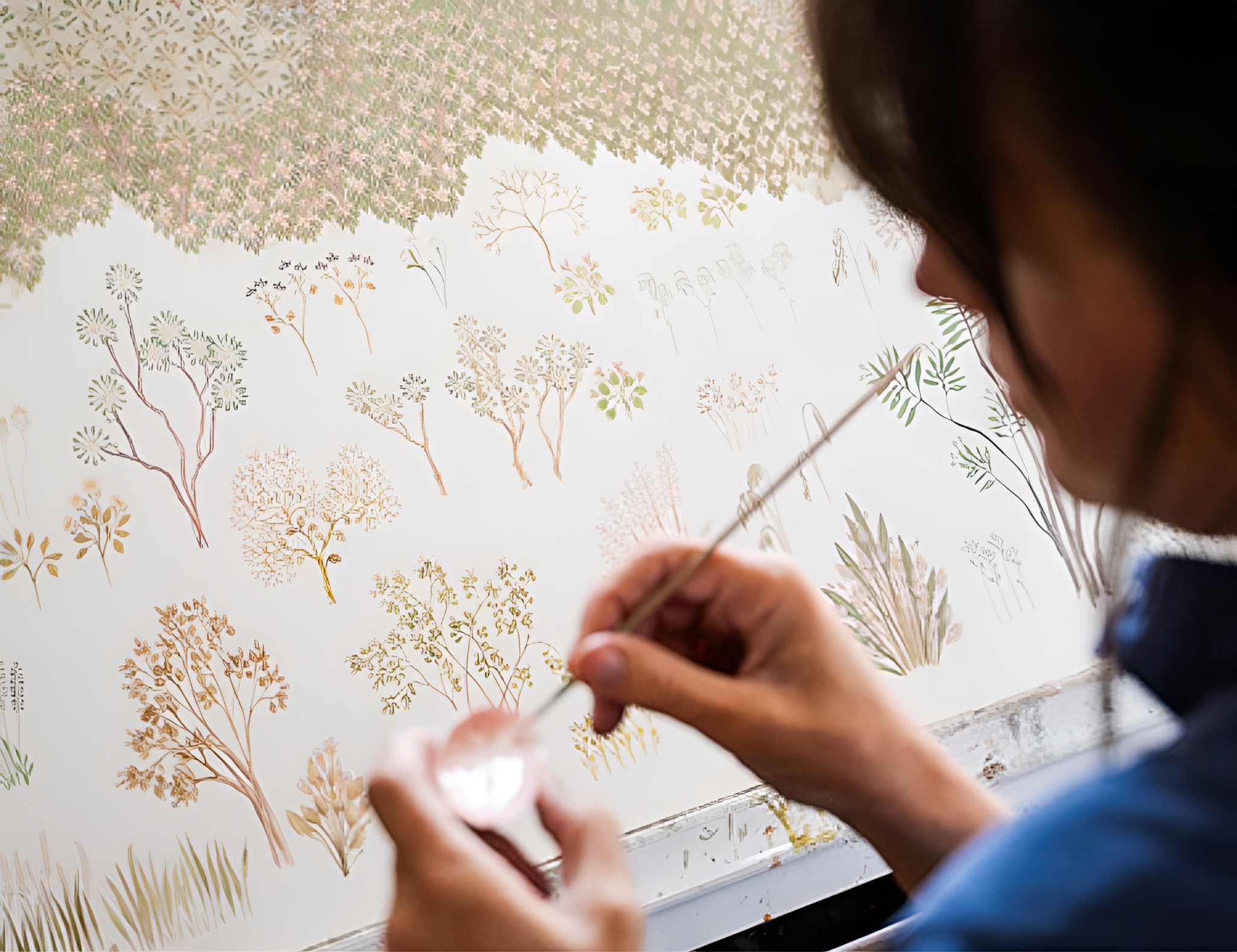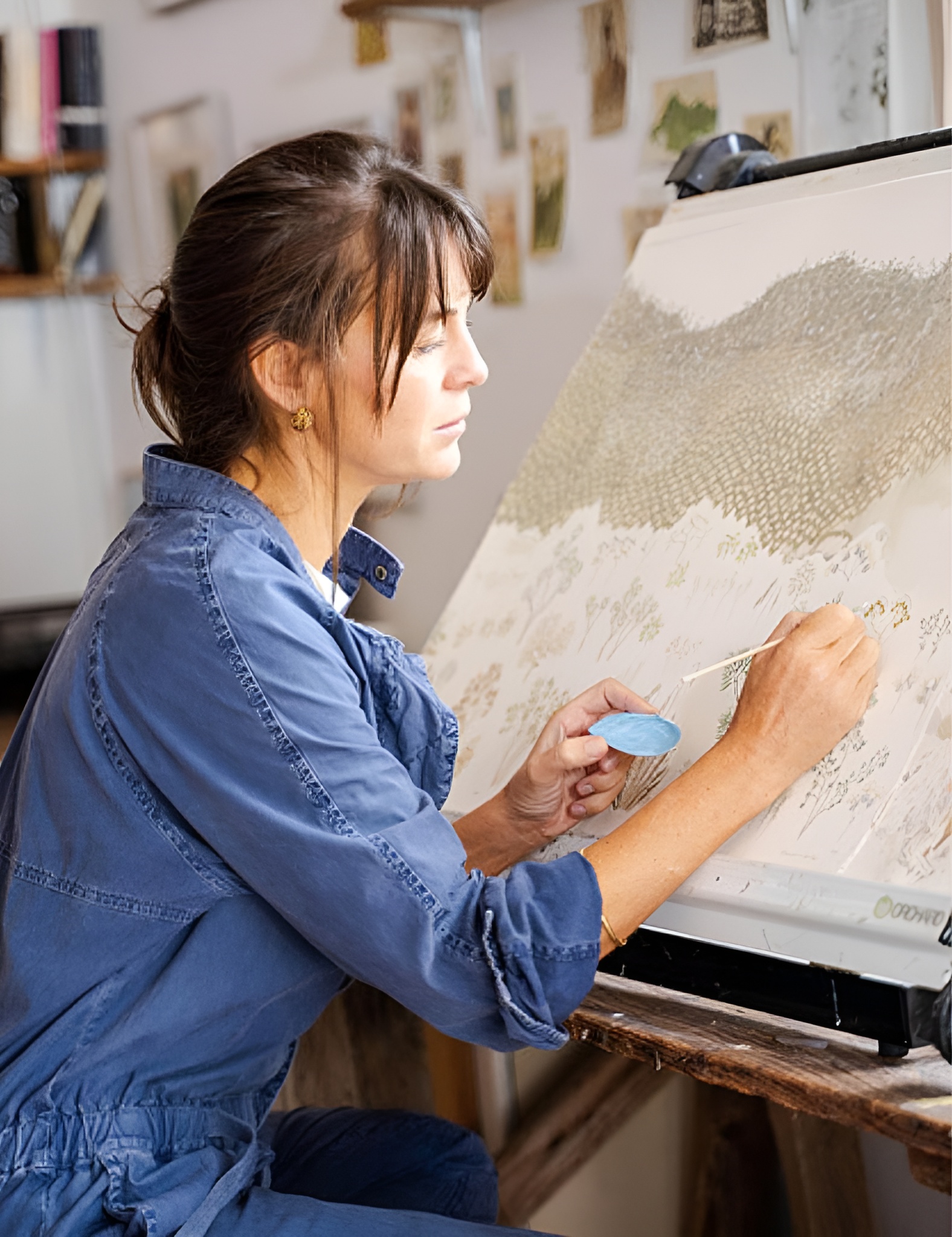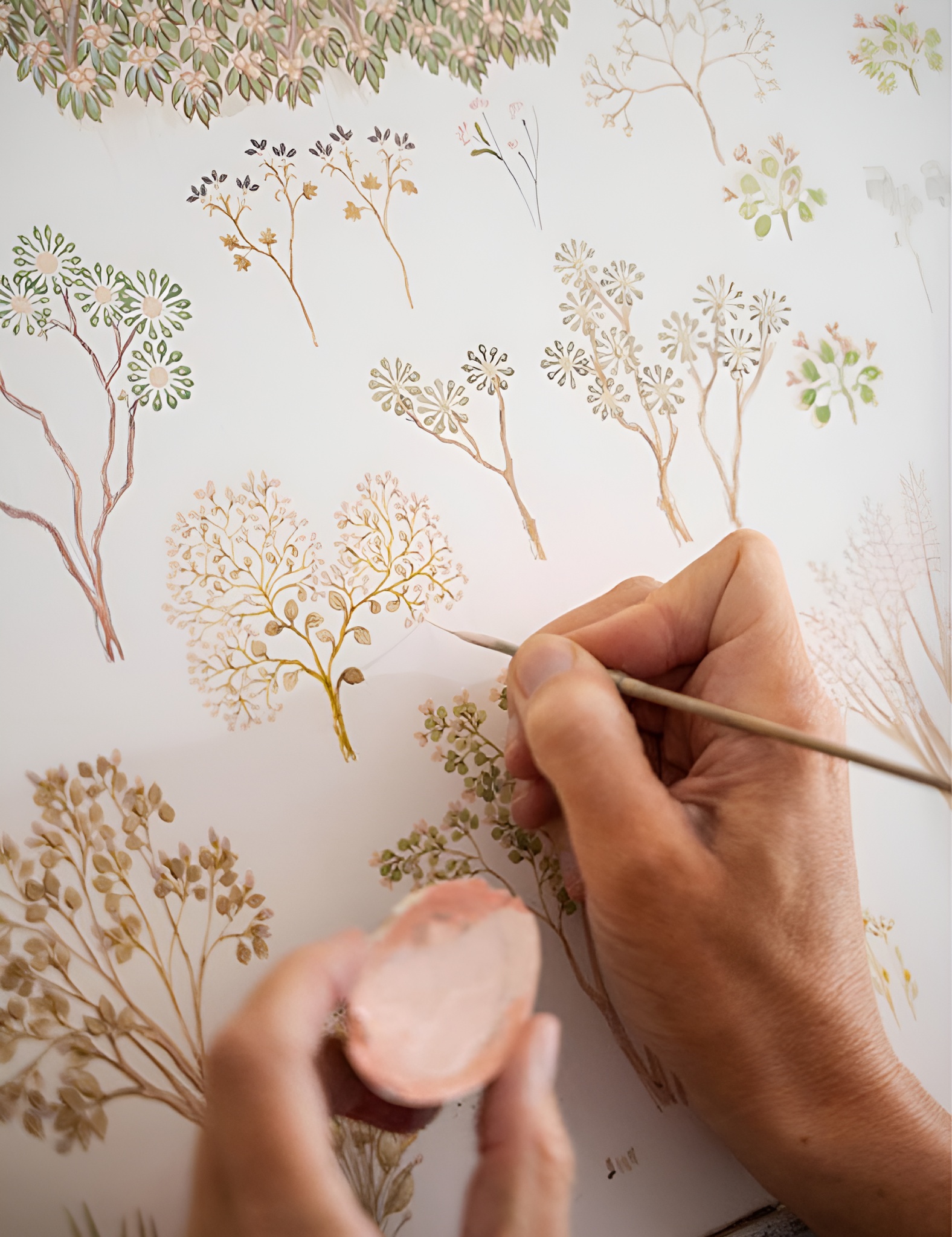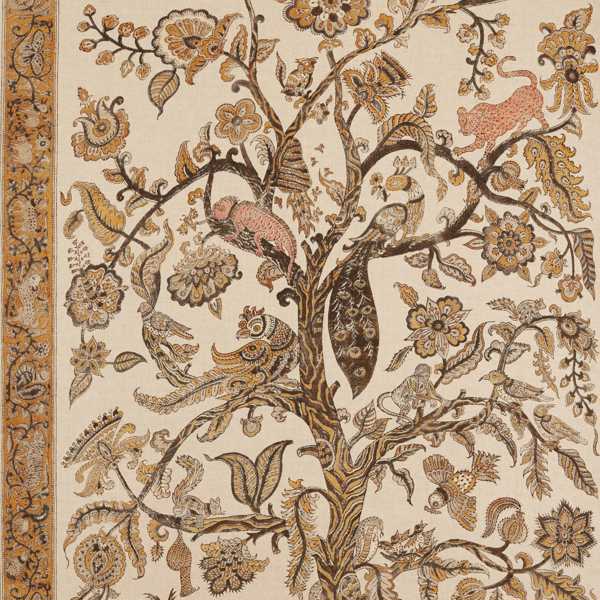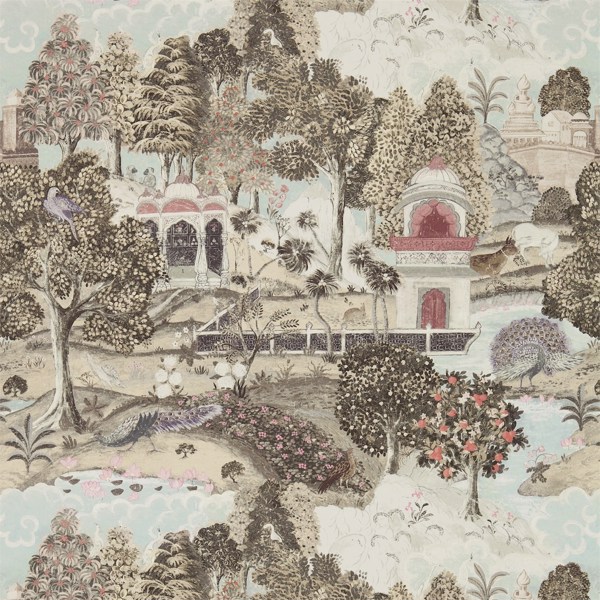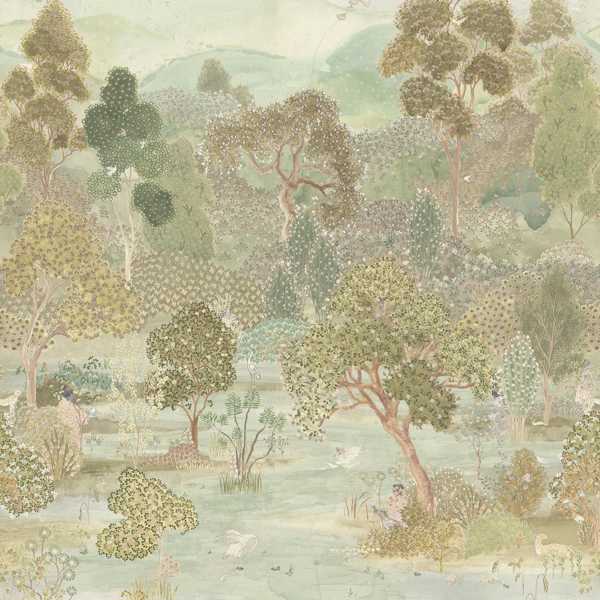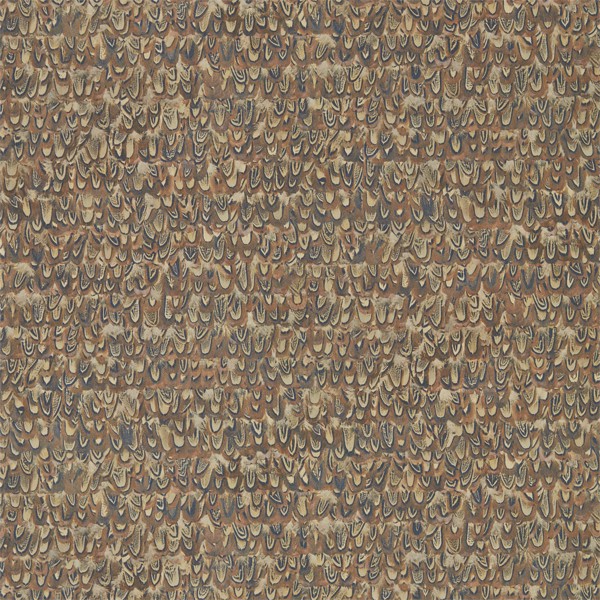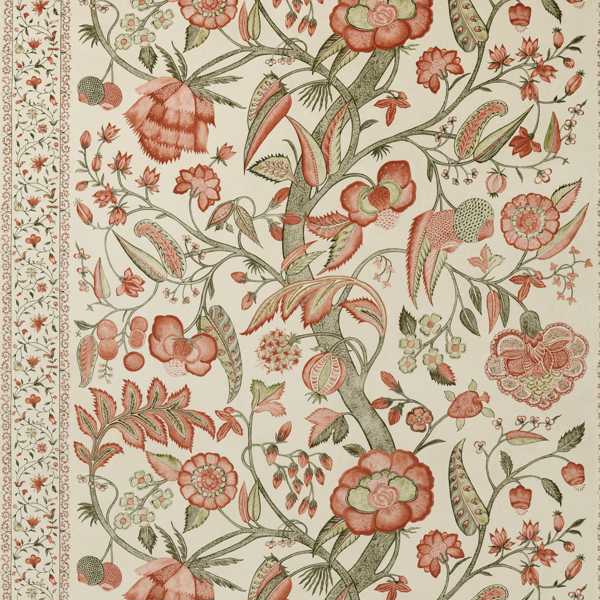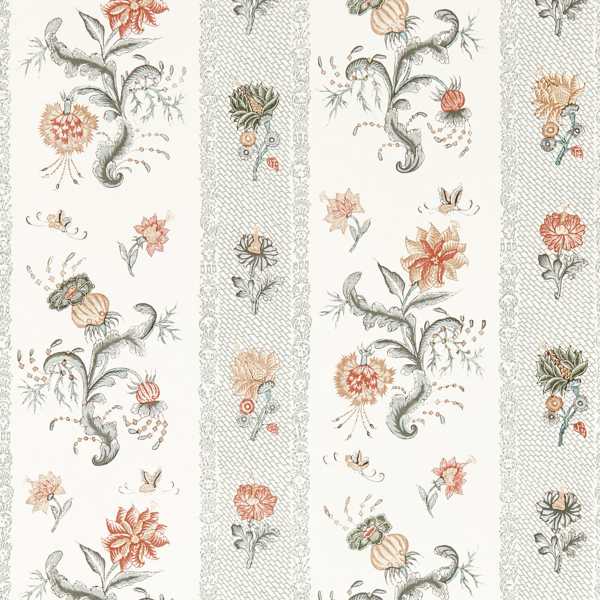- close
-
-
Collectionsarrow_drop_down
- All Collections
- Indienne
- Endpapers Wallcoverings
- Rare Textiles
- Domino Velvets
- Luxury Plains
- Moiré Wallcoverings
- Suffolk Damasks & Stripes
- Arcadian Thames Wallpapers
- Arcadian Thames Fabrics
- Arcadian Weaves
- Luxury Coordinates
- Cotswolds Manor Wallpapers
- Cotswolds Manor Fabrics
- Kensington Walk Wallpapers
- Kensington Walk Fabrics
-
Collectionsarrow_drop_down
Lost Lands Unveiled
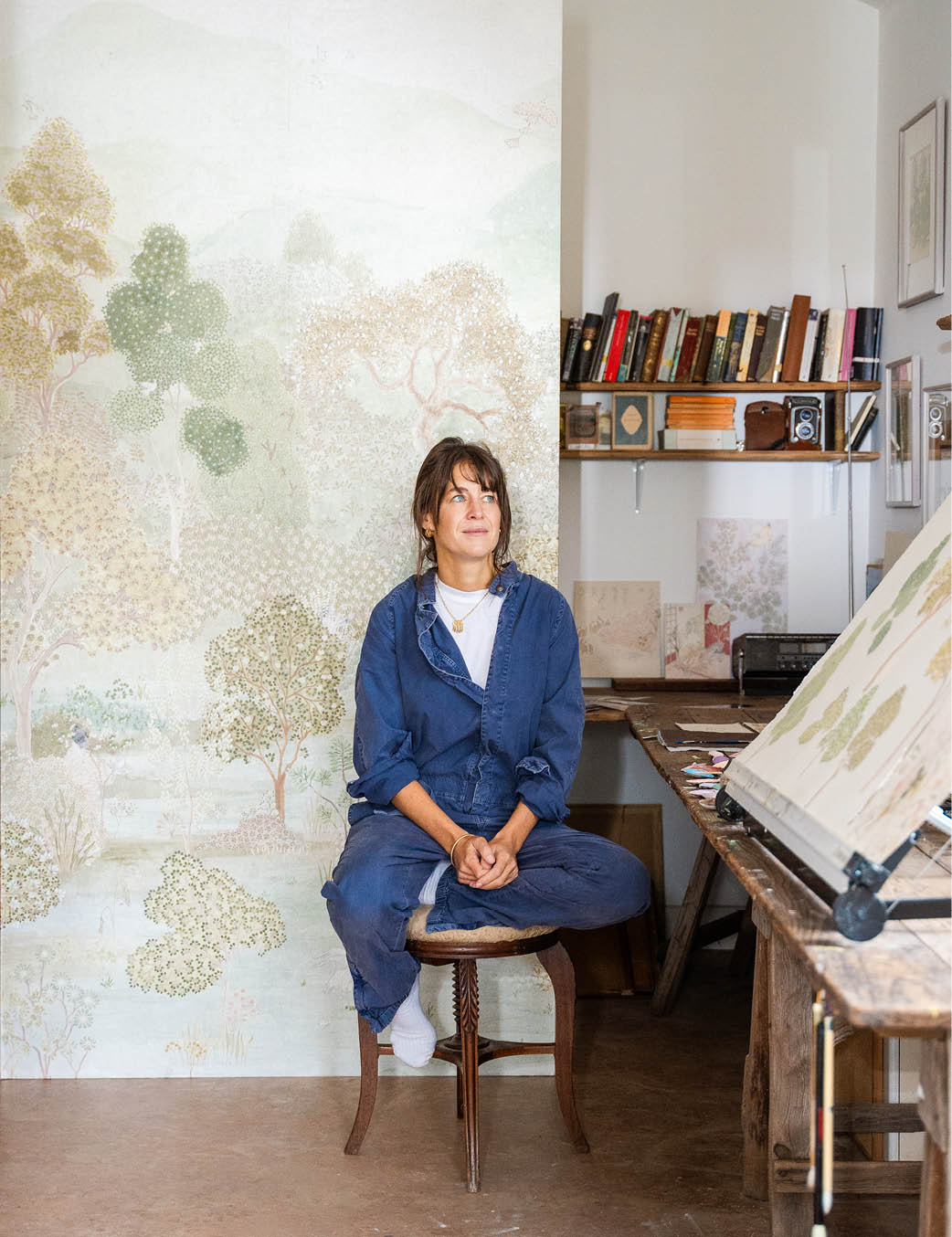
Blending Heritage and Landscape: A Mural Inspired by Indian Miniatures and the Beauty of Herefordshire
Colour pigments pooled in shells, handmade brushes fashioned from squirrel hair, and intense studies of shrub leaves are just some of the things you will most likely come across in the studio of Charlie Calder-Potts.
Charlie, an artist who’s received the training of Indian Miniature painting under the tutelage of Heraa Khan in Pakistan, who’s worked as an Official War Artist in Afghanistan, who’s studied Palekh icon painting in Russia under Vladimir Bushkov, brings a singular mix of experience to this exclusive Zoffany commission: to create a wallcovering for the SS25 collection.
For this piece, Charlie wanted to take elements of her time spent learning about the art of Indian Miniature painting, like making the traditional white opaque paint base (safeda) or to fashion an extremely fine brush (kalam) using Arabic gum and squirrel hair. But she wanted to carry these skills she acquired with a certain looseness, so as not to create an imitation of the past, but to fold in other ideas and influences she was thinking about at the time of creation.
Working on this piece in her homeland, situated within the sloping Malvern Hills of Herefordshire, she was also thinking about the cultures and history that the ground she was walking on had witnessed. ‘Lost Lands’, the mural’s namesake follows a history during Anglo-Saxon England, where areas of lands, once under Celtic control were gradually absorbed into the Anglo-Saxon kingdom of Merica, often leaving behind remnants of settlements and communities that became ‘lost’ to history due to the changing political landscape and subsequent assimilation.
Charlie attends to these ideas with her hand-wrought kalam, fashioning this poetic, otherworldly array of minutely rendered tree canopies endowing each article of leaf or trunk with an equal legibility. It’s quite the opposite of the European artistic tradition that focuses on shading, perspective, spatial depth, naturalism, and a consistent light source. But it’s an intended approach that’s intended to overload the senses, and conjure a luminous feast for the eyes.
This stylisation of flora and fauna echoes musawwari—the local term for Indian miniature painting before the colonial period. The Timurid sultan Husayn Mirza Bayqara once likened the process of fashioning each motif and shape as a stringing together of ‘pearls of meaning’.
DISCOVER INDIENNE WALLCOVERINGS
posted on 07 Mar 2025 in Interiors
